Robust, Smart Charging Network Needed To Boost EV Proliferation
- By 0
- April 05, 2020
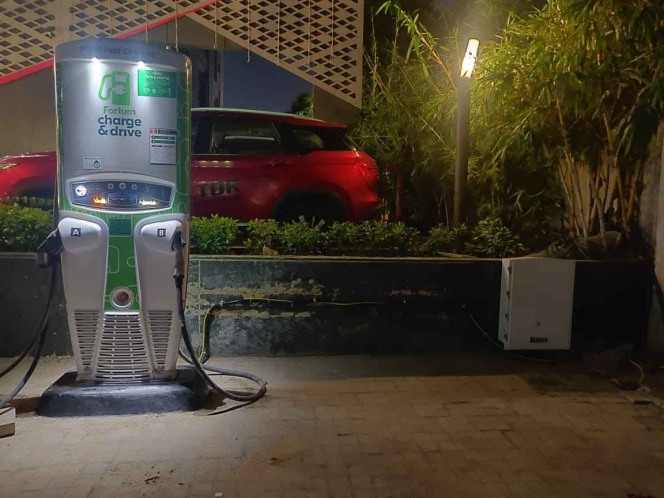
.jpg)
Q: India is the first country outside of Europe where you are operating. Why this entry?
Jha: The Indian market is different from the Nordic and European markets, and it is the first country outside Europe, where Fortum entered the electric vehicle charging space in 2017. We have integrated a couple of Indian chargers into our system and this enables us to deploy ‘Made in India’ chargers to our network. This will give our customers the freedom to choose the chargers, their availability, price and other benefits.
Fortum established its first charging station in New Delhi in 2017. Its services in India include owning charging infrastructure, operating other’s charging infrastructure network using Fortum’s own cloud-based charging system and selling Fortum’s proven off-the-shelf cloud system to other operators to manage charging infrastructure in the B2B segment.
Q: How do you see and predict the EV market in India?
Jha: India will benefit from the global growth of EV technologies and can reach a maturity stage faster than in other countries. As Tesla did for the US market, start-ups in India are poised to promote the adoption of EVs. Free from any legacy baggage, they are able to offer pure electric vehicles as is evident on the road, particularly in the two and three-wheeler sector. Traditional OEMs also are trying to hold on to their market share. Hyundai has taken the lead by introducing Kona. The electric version of Maruti cars can be seen on the road though in test mode. More than ten models of electric vehicles are slated for launch in the next 12-18 months. Tata Motors has announced plans to introduce more models of the electric variant. Mahindra promises to launch KUV 100 and SUV 300 with the electric powertrain. With India poised to become the third-largest auto market in the world, none of the players would like to miss this great opportunity.
With more and more renewable energy being fed into the grid, the use of EVs will provide the flexible load to balance the system.
Q: What are the fundamental differences between India and Europe in terms of vehicle requirements and charging infrastructure?
Jha: India and Europe share a common requirement in the automobile space. India generally follows the European automotive emission norms as Euro 6. Europe started the EV journey with high voltage system cars like Nissan Leaf, which warrants a different set of chargers to offer good customer experience. Starting from 50kW DC chargers, Europe has moved to high power charging capacity of 350kW in DC mode which brings down the charging time to about 10 minutes for a 150-200km range. On the AC side in public charging, it has a network of 22kW chargers which offer semi-fast charging to most of the vehicles. The 3.3 kW AC chargers are generally deployed at home and parking places.
India, on the other hand, has a different vehicle composition. Most of its EVs are two and three-wheelers which have a different kind of charging need. They are currently dominated by lead-acid batteries. In the four-wheeler passenger car segment also, India started with a unique product. The available cars are on low voltage battery system, which requires a different set of chargers – 15/20 kW power in DC mode. They need longer charging time than their counterparts in Europe where a car with almost double the size of battery can get charged in nearly half the charging time than in India. Now, a few OEMs have started selling high voltage system cars which would require 50kW charging infrastructure.
Another significant difference between Europe and India is the need for public charging. Most of the European countries have single-family low-rise homes with garage whereas Indian cities like Delhi have mostly unorganised street parking. This fundamentally alters the need of charging infrastructure in India. While in Europe home charging would be dominating, India will need public charging as the dominant mode.
.jpg) Q: Charging infrastructure and time is probably the biggest hindrance in the adaptation of EVs in India? How do you find opportunities in this area?
Q: Charging infrastructure and time is probably the biggest hindrance in the adaptation of EVs in India? How do you find opportunities in this area?
Jha: Three major interdependent stakeholders influence the evolvement of EVs in any country. They are: automobile manufacturers, battery manufacturers, and charging infrastructure providers. Given the limited use of e-vehicles in India now, the infrastructure for the same is also at a very nascent stage. The lack of sufficient infrastructure could be the most common reason for the range concern that directly affects the consumer behaviour and potential of EV sales in India. However, from the operators’ point of view, it is difficult to invest in charging infrastructure without an existing demand for charging services.
India will need ubiquitous public charging networks. India needs millions of charging points once all cars sales happen on the electric platform. This offers huge opportunity for both the private and the public sectors. However, considering the space constraint and inadequate electricity infrastructure, setting up such a massive network of public charging will be a demanding task. Government support will be required in making locations available for this purpose if we have to roll out a good network of charging stations.
For EVs to be acceptable, consumers have to be assured of the availability of charging stations like fuel stations for ICE vehicles. A robust charging station network would give them confidence, and that would work as a pull effect on OEMs.
Q: India is a vast country. How are you going to identify and target the regions or pockets where EV adaptation will be faster?
Jha: As it happens with any new technological product, initially EV will be adopted by innovators or early adopters. We expect that these vehicles will be adopted mostly in cities with the highest per capita income. We operate now in five cities: Delhi-NCR, Mumbai, Bengaluru, Hyderabad and Ahmedabad. We have 66 DC public charging points. Since the launch of our DC fast-charging stations in Hyderabad, we have seen positive adoption of electric vehicles by customers. We have more than 900 registered users, and more than 1500 customers have downloaded our mobile app. These are smart chargers which are unmanned and give freedom to the consumer to charge their vehicles at the location of their choice, and at their convenience.
Q: Do you think public utility places would play a more prominent role in increasing the number of EV charging stations? Could you highlight Fortum India’s partnership with Indian Oil?
Jha: We provide our bit in creating reliable and smart charging infrastructure. Our first DC fast public charging station in Hyderabad came up at IOC COCO retail outlet at Begumpet. We are operating 16 charging points at eight retail outlets of IOC in Hyderabad. We demonstrated our capability of operating smart chargers by unveiling the charging of Mahindra e2oplus remotely from Hotel ITC Kakatiya, Hyderabad, using Fortum Charge & Drive Mobile App.
Q: How many EV charging stations has Fortum India set up so far, and what is the immediate target?
Jha: Fortum has made 66 DC Fast charging points operational in Delhi-NCR, Hyderabad, Mumbai, Bengaluru, and Ahmedabad. Fortum Charge & Drive also offers a cloud solution to EV charging service providers and infrastructure investors.
Recently, we have established India’s first public charging network of 50 kW DC chargers at dealership locations of MG Motors. Any car owner can access these stations if the car is compatible with CCS/CHAdeMO standards. We are continuously evaluating opportunities across the country.
Q: How do you see the role of the stakeholders such as charging station infrastructure manufacturers, energy companies and operators in the growth of EV adoption?
Jha: Each stakeholder has a role to play in EV adoption in India. It is important to note that it is the vehicle and its battery system which determines the charging infrastructure need, not otherwise. The charging standards or capacity of chargers or time of charging, and everything is dependent on the design of the battery and its management system adopted by the OEMs. Charging manufacturers and operators follow the demand. In charging ecosystem, manufacturer caters to the supply side by offering his product which can be put to use by charge point operators at strategic locations. Energy distribution companies also have a critical role to play. EV charging, particularly public charging in DC mode, requires high capacity which might need augmentation of electricity infrastructure. Energy to Charge Point Operators (CPOs) should be provided at a reasonable price so that end-consumers can charge their vehicles at affordable prices. Efforts of all these stakeholders have to get aligned.
Q: What have been the ground-level challenges for Fortum India?
Jha: Access to a suitable location and electricity supply is a major challenge. The number of EVs initially will be less, so also the business for the Charge Point Operators. It will be more challenging if CPOs have to pay rent for the space or bear any upfront cost on electricity infrastructure. So it is expected that these two parts would be taken care of by the government or partners to make EVs affordable for the customers.
Q: Being in the EV charging station space, what do you expect from the government?
Jha: For the manufacture of EVs and the growth of the industry, the government introduced the FAME scheme. It would also support the manufacturing of advanced batteries which will accelerate the adoption of EVs by bringing down the cost of the battery. Tax reduction is a significant boost for the consumer as it would push the EV price to inch towards ICE vehicle price.
Creating a robust and smart charging network should be the focus. Although through FAME-II the government has called for proposals on the setting up of 1000 electric vehicle charging stations in the country, this is not enough. Consumers would like to have charging points at their preferred locations, time, and price to avoid range anxiety. This requires a robust, ubiquitous, and friendly charging network of stations. As charging takes more time than gasoline refuelling, the consumer would like to find a charging station in an exciting place where he would feel happy to spend time while the vehicle gets charged.
We have to add lakhs of charging points year after year if in future all vehicles sold are electric. This would require access to space, which is scarce, particularly in urban areas. Augmented electricity infrastructure would be needed at the local network level even though at the national level this will not be significant. So if the government finds some ways to offer space and upgrades electricity connections on the plug-and-play mode to CPOs it will give a boost to the creation of charging infrastructure.
EV charging would be a different proposition. Unlike oil and CNG, this has interdependency of battery and electricity. Appropriate communication is needed between battery and charger, and charge and grid, to ensure safety and reliability to the vehicle and grid. This necessitates that charging infrastructure must be smart. This would also warrant a smart grid. What is needed is a greater and urgent push towards upgradation and strengthening of both electricity and charging infrastructure. (MT)
- Visteon Corporation
- Mahindra & Mahindra
- Mahindra XUV7X0
- Francis Km
- Adreonx+
- Qualcomm Technologies
- Auto Shanghai 2025
- CES 2026
- Snapdragon
- Uday Dodla
- Mark Granger
Visteon Showcases High-Performance Cockpit Computing, Expands Partnership With Mahindra & Mahindra Too
- By MT Bureau
- January 09, 2026
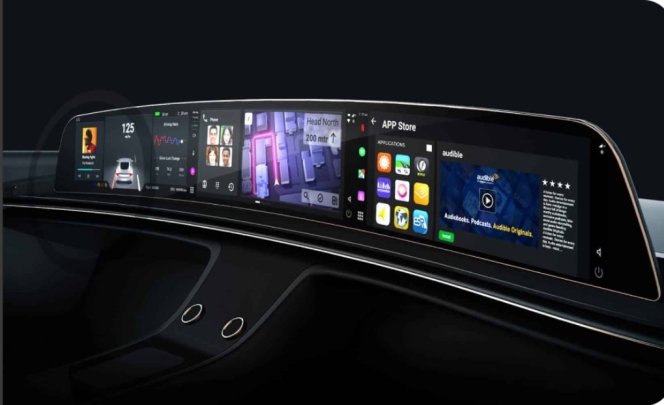
Visteon Corporation has announced an expanded technology partnership with Mahindra & Mahindra that will see its next-generation SmartCore Pro cockpit domain controller deployed in Mahindra’s XUV7X0 SUV lineup.
Unveiled at CES 2026, the SmartCore Pro builds on the SmartCore system introduced in the Mahindra XUV700 in 2021. The new system integrates cockpit electronics, surround view camera technology and telematics on Mahindra’s Adrenox+ platform. It features a three-display configuration supporting vehicle information, infotainment, ADAS visualisation and connectivity, alongside an integrated 360-degree camera system.
Francis Kim, Vice-President of Global Sales & Commercial Excellence and General Manager for Rest of Asia, Visteon, said, “The automotive industry is shifting from discrete systems to fully integrated digital platforms, and India is among the fastest-moving markets in this transition. This partnership demonstrates how strategic OEM collaboration can accelerate time-to-market for complex technologies while laying the foundation for software-defined vehicles.”
Alongside the Mahindra announcement, Visteon also showcased the production specifications and OEM implementations of its High-Performance Compute solution built on the Snapdragon Cockpit Elite platform. The solution follows Visteon’s collaboration with Qualcomm Technologies announced at Auto Shanghai 2025 and is now being demonstrated with multiple global OEMs.
The High-Performance Compute platform supports centralised vehicle architectures and software-defined vehicle strategies. It enables on-device AI processing, multi-display support, multi-user experiences and personalised cockpit features. The system uses the Qualcomm Oryon CPU, Qualcomm Adreno GPU and enhanced NPU AI performance, while Visteon’s cognitoAI Concierge digital assistant operates using the company’s QWEN 7B model.
Uday Dodla, Vice-President, Product Management, Visteon, said, “This High-Performance Compute solution addresses a critical challenge our OEM partners face as they transition to centralized architectures. By consolidating multiple ECUs into a single, powerful platform, we're enabling automakers to reduce complexity and costs while delivering the sophisticated AI-driven experiences that consumers increasingly expect.”
Mark Granger, VP, Product Management at Qualcomm Technologies, said, “Visteon's demonstration of its High-Performance Compute solution on the Snapdragon Cockpit Elite platform highlights the momentum toward centralized, software-defined architectures that will power the next era of intelligent, connected vehicles.”
Visteon said the platform is designed to support a common architecture across vehicle segments, allowing OEMs to scale features while consolidating electronic control units and supporting long-term cost efficiencies.
Valeo Join Forces With Hero MotoCorp To Bring ARAS Tech For Two-Wheelers
- By MT Bureau
- January 09, 2026
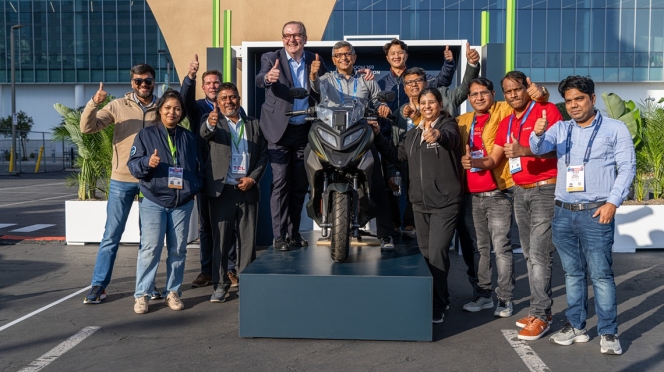
French tier 1 supplier Valeo and Hero MotoCorp, the world’s largest manufacturer of motorcycles and scooters, have inked a strategic partnership for Advanced Rider Assistance Systems (ARAS).
The partnership will focus on enhancing rider safety by introducing advanced sensing, perception and intelligent technologies tailored specifically for two-wheelers across both entry-level and premium segments, including the OEM’s emerging electric mobility portfolio under VIDA.
As part of the understanding, they will focus on ARAS by leveraging Valeo’s radar and smart camera tech equipped in Hero MotoCorp’s two-wheeler portfolio. This will not only enhance safety for two-wheeler users in India, but is also expected to drive awareness amongst customers globally.
The partners state that they have already achieved success in its proof-of-concept systems designed to protect both riders and pedestrians.
Marc Vrecko, CEO, Valeo’s Brain Division, said, “We are truly excited to partner with Hero MotoCorp to deliver solutions that will significantly enhance rider safety and create a more secure riding experience for millions of people. This collaboration is a key step in our strategy to bring advanced technology to the rapidly growing mobility market in India and globally.”
Ram Kuppuswamy, COO, Plant Operations, Hero MotoCorp, said, “At Hero MotoCorp, we are redefining the future of mobility by bringing advanced technology to our products. Our partnership with Valeo marks a significant stride in making mobility smarter, safer and more sustainable with next-gen advanced rider assistance systems. Together, we aim to make two-wheeler safety accessible to everyone and set new standards for innovation and protection globally.”
The ARAS architecture is developed as a digital co-pilot for riders, providing a 360deg safety envelope around the vehicle, it provides real-time sensing and intelligent alerts. It uses a radar-based system that can provide critical information/warnings such as Forward Collision Warning (FCW), Distance Warning (DW), Lane Change Assist (LCA), Blind Spot Detection (BSD) and Rear Collision Warning (RCW).
On the other hand, the vision system uses high-resolution cameras to provide Pedestrian Detection, Lane Detection, Traffic Sign Recognition and Lane Departure Warning.
Through intelligent image processing the system identifies road signs and obstacles, even in low-light conditions. Through the combination of radar and vision system, the two-wheeler encompasses a comprehensive safety system for two-wheeler users.
SiMa.ai And Synopsys Announce Integration To Accelerate Automotive AI Development
- By MT Bureau
- January 08, 2026
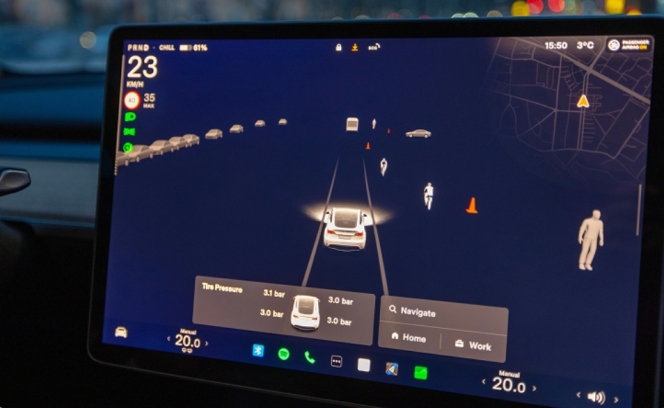
SiMa.ai has announced its first integrated capability resulting from a collaboration with Synopsys. The joint solution provides a blueprint to accelerate architecture exploration and virtual software development for automotive Systems-on-Chip (SoCs). These chips support applications including Advanced Driver Assistance Systems (ADAS) and In-Vehicle Infotainment (IVI).
The partnership aims to deliver architectures required for software-defined vehicles. The blueprint allows customers to begin the design and validation of custom AI SoCs and ‘shift left’ software development before silicon is available. This process is intended to reduce development costs and accelerate vehicle time-to-market.
The blueprint provides pre-integrated SoC virtual prototypes and a tool workflow using solutions from both companies.
For Architectural Exploration:
- SiMa.ai MLA Performance and Power Estimator (MPPE): Enables customers to size machine learning accelerator designs for specific workloads.
- Synopsys Platform Architect: Used to model workloads and analyse performance, power, memory, and interconnect trade-offs before RTL design.
For Verification and Validation:
- Synopsys Virtualiser Development Kit (VDK): Facilitates software development using a virtual SoC prototype, which can accelerate vehicle time-to-market by up to 12 months.
- SiMa.ai Palette SDK: Supports machine learning workflows for edge AI applications.
- Synopsys ZeBu Emulation: Delivers pre-silicon hardware and software validation to ensure architectures meet workload requirements.
Krishna Rangasayee, Founder & CEO at SiMa.ai, said, "We are pleased with how well the two teams have worked together to quickly create a joint solution uniquely focused on unlocking physical AI capabilities for today's software defined vehicles. Our best-in-class ML platform, combined with Synopsys' industry-leading automotive-grade IP and design automation software creates a powerful foundation for innovation across OEMs in autonomous driving and in-vehicle experiences."
Ravi Subramanian, Chief Product Management Officer, Synopsys, said, "Automotive OEMs need to deliver software-defined AI-enabled vehicles faster to market to drive differentiation, which requires early power optimisation and validation of the compute platform to reduce total cost of development and time to SOP. Our collaboration with SiMa.ai delivering an ML-enabled architecture exploration and software development blueprint supported by a comprehensive integrated suite of tools significantly jumpstarts these activities and enables our automotive customers to bring next-generation ADAS and IVI features to market faster."
Tianma Showcases Automotive Display Technologies At CES 2026
- By MT Bureau
- January 08, 2026
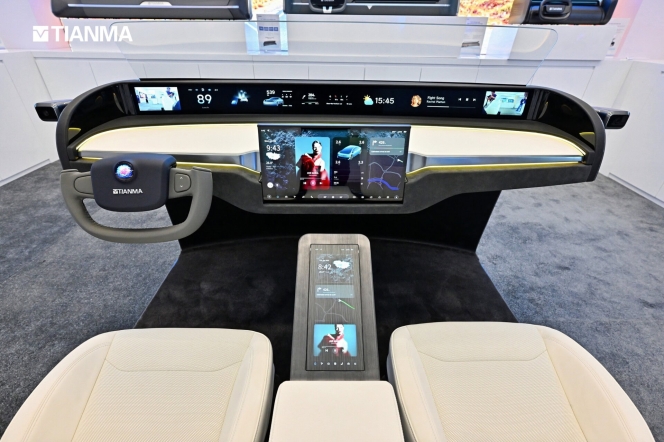
Chinese display panel manufacturer Tianma recently exhibited its range of automotive technologies at CES 2026. The company’s solutions include LTPS-LCD, AMOLED and MicroLED technologies designed for cockpits.
The centrepiece of the exhibit was the Smart Cockpit 7.0, an automotive interior and dashboard demonstration. It integrates a 49.6-inch curved ACRUS display with 8K resolution and a slidable AM-OLED display using a gear-rack mechanism.
It also presented InvisiVue, a solution that mimics decorative surfaces like wood or metal when inactive and reveals images through a transmissivity layer when powered on.
The 49.6-inch ACRUS curved display uses Corning ColdForm Technology. It features pixel-level dimming with 210,000 zones, achieving a contrast ratio of 100,000:1. The unit’s R3000 curvature is designed to align with the windshield to reduce blind spots and reflections.
Furthermore, Tianma also presented two HUD technologies – a 43.7-inch Ultra-wide IRIS HUD. It uses a Mini-LED display with peak brightness of 10,000 nits for visibility in sunlight. It features an 85 percent NTSC colour gamut and a curved structure designed to match the windshield’s optical path.
Secondly, an 11.98-inch IRIS HUD, which utilises high-luminance PGU technology, delivering 12,000 nits brightness. The module is less than 15 mm thick for integration in compact vehicles and operates at approximately 6 W to reduce thermal load.
The company also introduced a 34-inch dye liquid crystal dimming glass for rear side privacy windows. This technology uses voltage control of liquid crystal molecules to achieve stepless dimming without physical sunshades.
The system provides a response time of less than 300ms for transitions between privacy and transparent modes. It features a wide viewing angle and a grey-black tone to manage glare within the vehicle interior.







Comments (0)
ADD COMMENT